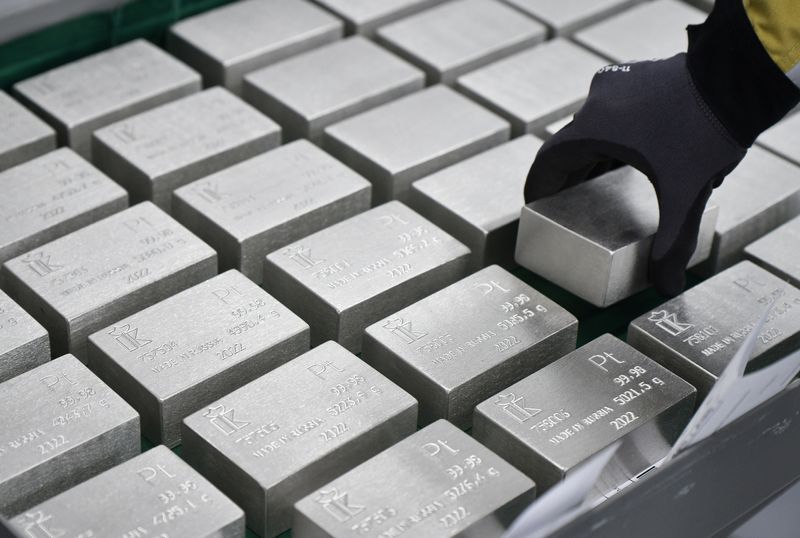By Ashitha Shivaprasad and Peter Hobson
(Reuters) - Analysts and traders have sharply lowered their price forecasts for platinum and palladium as a global economic slowdown reduces demand, a Reuters poll showed on Wednesday.
Both metals are used primarily by auto makers, which embed them in engine exhausts to reduce emissions. Platinum is also used in other industries, jewellery, and for investment.
Platinum prices have fallen from a 9-month high of $1,179.81 an ounce in March to around $900 and palladium from a record high of $3,440.76 an ounce in March to around $2,100.
The median forecasts from a survey of 27 analysts and traders were for platinum to average $900 an ounce in the third quarter of 2022, $914 in the fourth and $1,013 in 2023.
That is down from a forecast of $1,170 for 2023 returned by a similar poll three months ago.
For palladium, the poll forecast average prices of $1,950 an ounce in the third quarter, $1,975 in the fourth and $2,060 in 2023 -- down from a forecast of $2,250 for 2023 in the poll in May.
GRAPHIC: Platinum and palladium prices (https://fingfx.thomsonreuters.com/gfx/ce/egpbkdknavq/PGM%20poll%20August%202022.JPG)
Prices surged early in 2022 as the in Ukraine raised the threat that sanctions would cut supply from Russia, a major producer.
So far Russian supply has continued to flow but high inflation, fast-rising interest rates and COVID-19 lockdowns in China have pushed to world economy towards recession.
"Sustained weakness in the auto sector is weighing on platinum autocatalyst demand (and) jewellery demand is suffering," said analysts at ANZ bank.
On palladium, they said "a sustained price trend reversal would require auto sector growth to recover."

Four analysts submitted supply-demand forecasts. All said platinum would be oversupplied this year but that the surplus would shrink in 2023. One predicted a deficit in 2023.
Three of the four predicted that palladium would be slightly oversupplied this year. For 2023, two predicted a small surplus, one a small deficit and one said the market would be balanced.